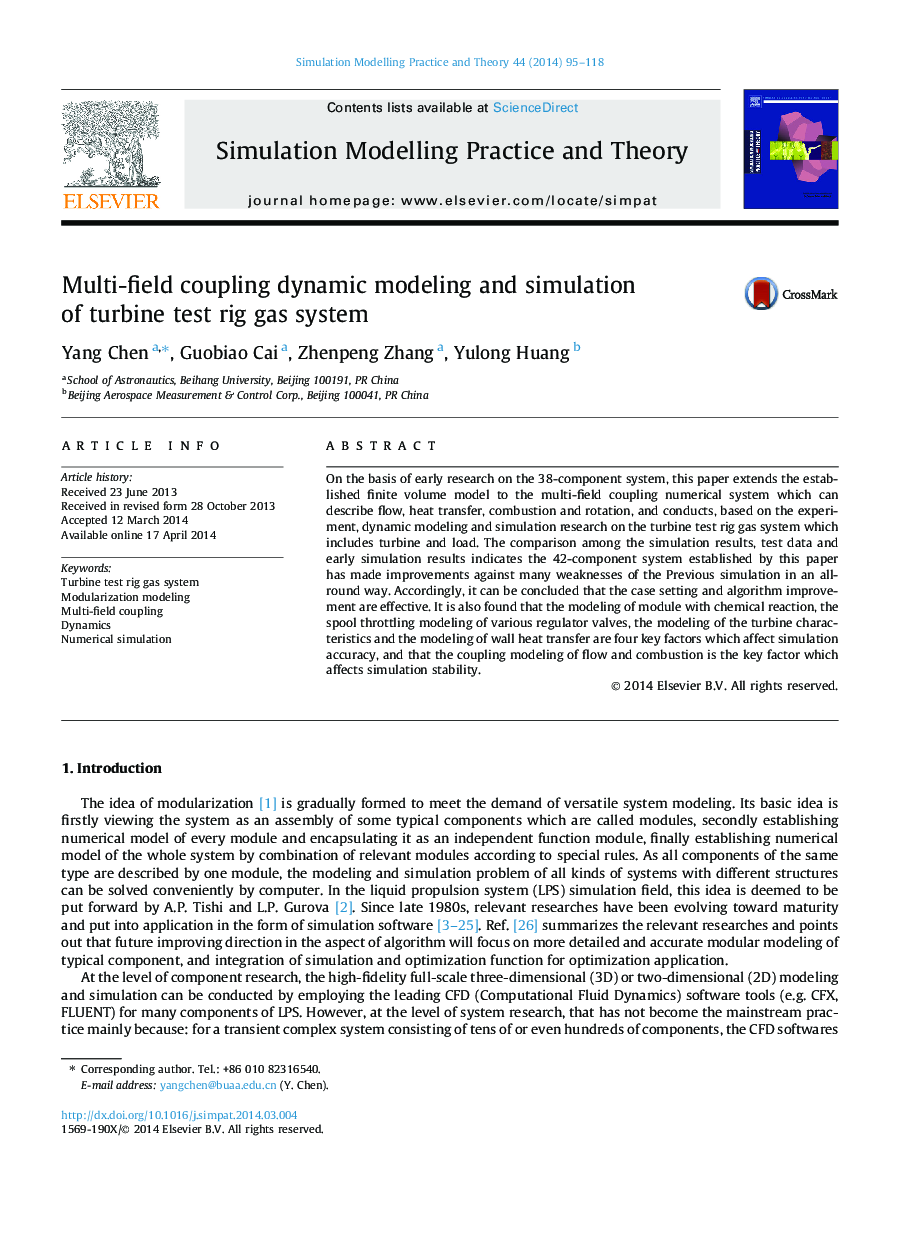| Article ID | Journal | Published Year | Pages | File Type |
|---|---|---|---|---|
| 492184 | Simulation Modelling Practice and Theory | 2014 | 24 Pages |
•Multi-field coupling numerical system of flow, heat transfer, combustion, rotation.•Turbine is connected to main test system by partially integrated zooming method.•A low-cost and convenient virtual test platform is established for engineering test.•42-component system makes improvements against many weaknesses of previous research.•Key factors which affect simulation accuracy and stability are revealed.
On the basis of early research on the 38-component system, this paper extends the established finite volume model to the multi-field coupling numerical system which can describe flow, heat transfer, combustion and rotation, and conducts, based on the experiment, dynamic modeling and simulation research on the turbine test rig gas system which includes turbine and load. The comparison among the simulation results, test data and early simulation results indicates the 42-component system established by this paper has made improvements against many weaknesses of the Previous simulation in an all-round way. Accordingly, it can be concluded that the case setting and algorithm improvement are effective. It is also found that the modeling of module with chemical reaction, the spool throttling modeling of various regulator valves, the modeling of the turbine characteristics and the modeling of wall heat transfer are four key factors which affect simulation accuracy, and that the coupling modeling of flow and combustion is the key factor which affects simulation stability.
